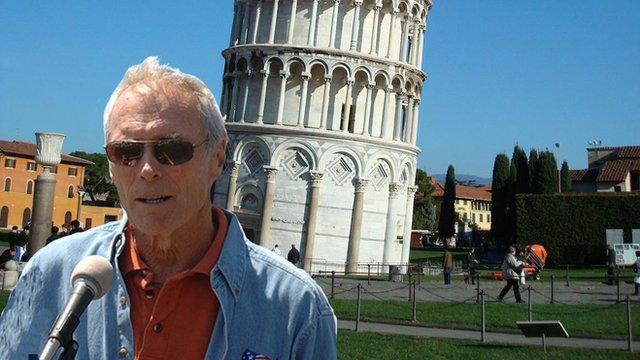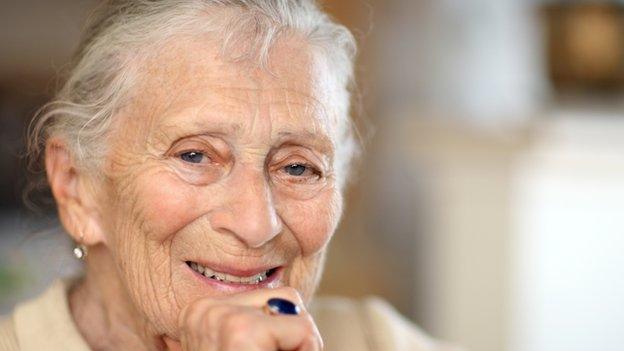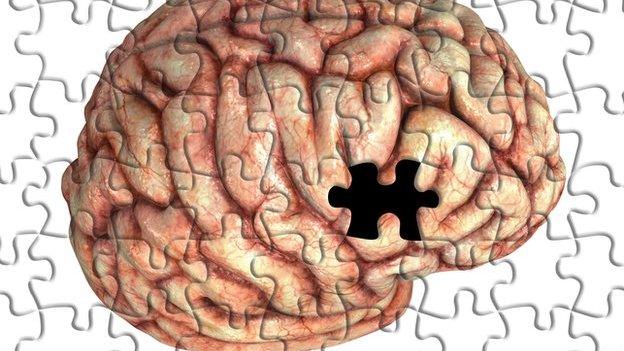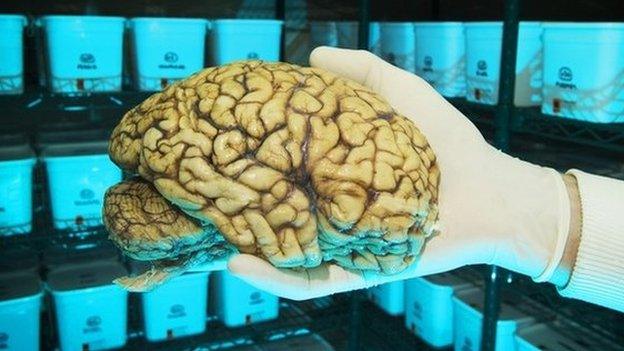'Celebrity mind game' may reveal clues to memory
- Published

Scientists discovered a "Jennifer Aniston" neuron a decade ago
Researchers have used "mind games" to reveal clues about how nerve cells may change when making new memories.
The team asked 14 volunteers to view pictures of people and faces, while recording the activity of single brain cells.
Scientists said they spotted "dramatic" differences in nerve activity at the exact moment a participant learnt of a new link between a person and place.
The early work is published in the journal Neuron, external.
People and places
Brain scientists have long debated exactly how memories are formed, and many questions remain unanswered.
Competing theories include the idea that solitary or just a few nerve cells represent a single person or concept, while others believe a whole host of neurons are needed to form a memory.
A decade ago, a team including Prof Rodrigo Quian Quiroga, discovered a specific "Jennifer Aniston" neuron that fired whenever an individual looked at pictures of the actress.
Building on this work, Prof Quiroga, collaborating with Dr Matias Ison, at the University of Leicester, and scientists at the University of California, Los Angeles, delved further to see if such cells also had a role in making new memories.
To do this, they designed a series of experiments that loosely mimicked a person recollecting meeting someone in a new place.
They asked participants - who had electrodes attached to their brains to monitor nerve activity - to look at pictures of people such as actor Clint Eastwood and Jennifer Aniston.
Throughout each test, researchers recorded which specific nerve cells fired in response to each picture.
They then asked participants to look at images of unrelated landmarks - such as the Leaning Tower of Pisa, while mapping separate nerve cells that corresponded to each place.

The study used images such as Clint Eastwood in front of the Leaning Tower of Pisa
Images were then digitally merged together, for example to show Clint Eastwood standing in front of the Leaning Tower of Pisa.
Finally, when people were shown pictures of just the tower again - this time with no celebrity posing in front of it - the neuron initially responsive to Clint Eastwood started firing too.
Scientists say this points to rapid links being made between the unrelated celebrity and place.
Dr Matias Ison said: "This is the first study to look at how a single neuron correlates learning of new contextual associations in the human brain.
"The astonishing fact was that these changes were dramatic, in the sense of neurons changing from being very silent to firing a lot and that these changes occurred at the exact moment of learning."
The researchers hope this finding will help them better understand the basics of memory creation, though they acknowledge memory is more complex than just forming links between unrelated concepts.
Winrich Freiwald, assistant professor at The Rockefeller University, told the BBC: "This strengthens the idea that neurons can represent high-level complex entities such as people and landmarks.
"And by studying people at the exact time they learn new associations, the work provides unique insights into the formation of new memories."
- Published13 March 2015

- Published17 March 2015

- Published13 May 2015
